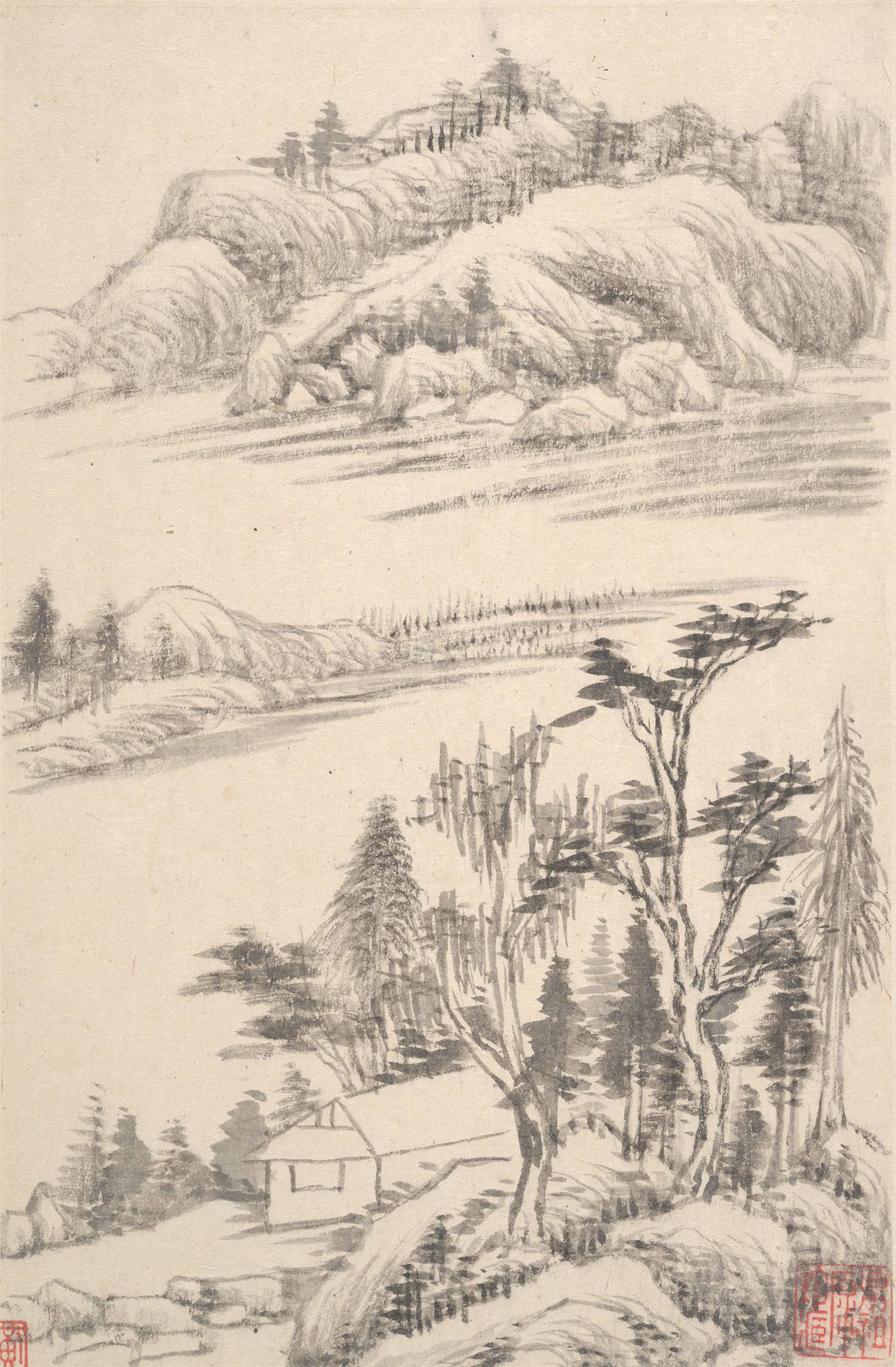Chinese painting is one of the oldest continuous artistic traditions in the world. The earliest paintings were not representational but ornamental; they consisted of patterns or designs rather than pictures. Early pottery was painted with spirals, zigzags, dots, or animals. It was only during the Warring States Period (475-221 BC) that artists began to represent the world around them.
Painting in the traditional style is known today in Chinese as guó huà (国画), meaning 'national' or 'native painting', as opposed to Western styles of art which became popular in China in the 20th century. Traditional painting involves essentially the same techniques as calligraphy and is done with a brush dipped in black or colored ink; oils are not used. As with calligraphy, the most popular materials on which paintings are made of are paper and silk. The finished work can be mounted on scrolls, such as hanging scrolls or handscrolls. Traditional painting can also be done on album sheets, walls, lacquerware, folding screens, and other media.
One of the most famous paintings belonged to landscapes.
these paintings were so beautiful that the viewers were unable to know whether it was a picture or
reality...... k Some of the paintings are given below...
For more knowledge you may watch this video ....
for further knowledge about chinese paintings and landscapes please go through wikipedia or web...
thanks for exploring my blog....
Painting in the traditional style is known today in Chinese as guó huà (国画), meaning 'national' or 'native painting', as opposed to Western styles of art which became popular in China in the 20th century. Traditional painting involves essentially the same techniques as calligraphy and is done with a brush dipped in black or colored ink; oils are not used. As with calligraphy, the most popular materials on which paintings are made of are paper and silk. The finished work can be mounted on scrolls, such as hanging scrolls or handscrolls. Traditional painting can also be done on album sheets, walls, lacquerware, folding screens, and other media.
One of the most famous paintings belonged to landscapes.
 | ||
| Painting was no longer about the description of the visible world; it became a means of conveying the inner landscape of the artist's heart and mind. |
reality...... k Some of the paintings are given below...
For more knowledge you may watch this video ....
for further knowledge about chinese paintings and landscapes please go through wikipedia or web...
thanks for exploring my blog....



No comments:
Post a Comment